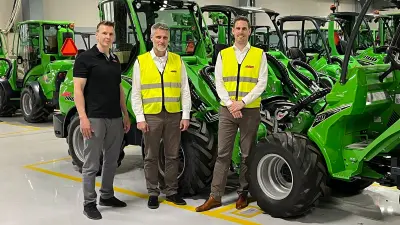Why to change a running system?
The smart wiper motor WDD2 from Bosch has an answer!

Bosch recently offered vehicle manufacturers a smart wiper motor (based on proven WDD2-AA technology), especially in the off-highway sector, which can be configured according to the vehicle model. This lowers costs and avoids manufacturers having to use an individual wiper motor for each model. In addition, customers benefit from Bosch's decades of experience in the manufacture of wiper motors. We spoke to one of our customers about why he chose our product.
What motivated you to move from the old technology of wiper motors to the Smart Motor from BOSCH?
Well, first of all the features which come with the smart motor. Due to he fact that we have "very specific angles" for our windscreen inside our applications, the programmability is a big advantage. For these requirements the BOSCH smart motor (WDD2) can be adjusted to the needs of our applications easily.
In addition the pricing was very competitive compared to the motors we used to purchase before the WDD2. In summary "better features, better pricing, also quality". Especially with the quality we struggled in the past.
You were talking about the price point, can you tell us a little bit more about how important the commercial aspect was for your decision?
Certainly the price point was an important aspect in the decision making. In the end the price point was really "tempting" in relation to the benefits and features we got. At the beginning of our cooperation it was a learning curve to adjust our forecasted volumes to the BOSCH logistics standards. Especially in the critical phase of global component-shortages we didn't have any delivery issues with you as supplier. In the end in our purchasing strategy we do also consider the quality factor, that's why finally we have chosen the smart motor from BOSCH for our applications.
Let's talk about the total cost of ownership (TCO). What changed at your side using the WDD2?
Our strategy is to limit the part number variance for our various applications, we are heading for standardization as much as possible. This we can do using the WDD2.
Would you kindly share with us how many WDD2 (field- claims) failed so far?
Since the WDD2 was installed in our machines, we have not received any complaints. By the way we do also offer the WDD2 as a Retrofit-kit for our machines in operation or where machines have to be repaired due to a damaged windshield.
Would you kindly share with us your experience in regards to the cooperation with BOSCH, especially the support of implementation?
I can state that the cooperation is really good. We get a really good support in general from BOSCH side as well as trainings. In the beginning we had to learn how to use the WDD2 in a proper manner (especially the calibration and the pre-programmed mode). With the hands-on approach and support from the BOSCH team, we were able to introduce the software smoothly into the applications and finally into series production.
What are your future plans with the WDD2?
We started with one cabin, but our plans are to use the smart motor WDD2 in future as well for any other application we are developing. As we are growing and extending our portfolio and production volumes, the expansion with your motor is still ongoing.
Are there any plans to change the E/E Architecture for your machines, from digital operation to LIN/CAN operation?
We are flexible and do fast changes in case needed on our machines. Even if this is not in usage at moment, the beauty is that even if we would decide tomorrow to change our E/E architecture inside our machines, we are capable to do so and especially with the same smart motor from BOSCH.
The pre- programming is additional work, therefore indeed we are actively thinking about this opportunity to run the motor this way (LIN/CAN) in future.